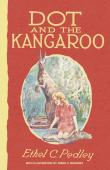'This article examines children's novels and short stories published in the late nineteenth and early twentieth centuries that feature bushfires and the ceremonial fires associated with Indigenous Australians. It suggests that British children's novels emphasise the horror of bushfires and the human struggle involved in conquering them. In contrast, Australian-authored children's fictions represent less anthropocentric understandings of the environment. New attitudes toward the environment are made manifest in Australian women's fiction including J. M. Whitfield's ‘The Spirit of the Bushfire’ (1898), Ethel Pedley's Dot and the Kangaroo (1899), Olga D. A. Ernst's ‘The Fire Elves’ (1904), and Amy Eleanor Mack's ‘The Gallant Gum Trees’ (1910). Finally, the article proposes that adult male conquest and control of the environment evident in British fiction is transferred to a child protagonist in Mary Grant Bruce's A Little Bush Maid (1910), dispensing with the long-standing association between the Australian bush and threats to children.' (Publication summary)








